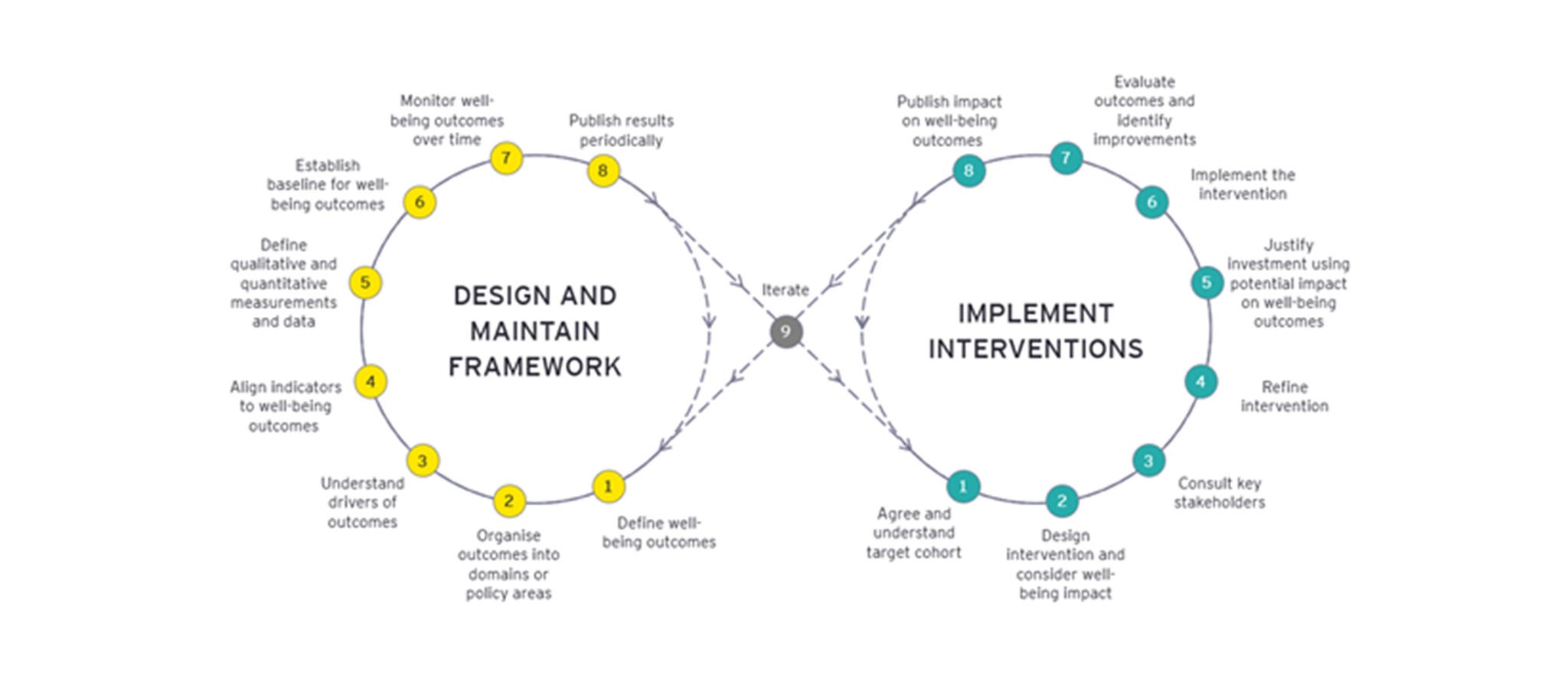EY refers to the global organisation, and may refer to one or more, of the member firms of Ernst & Young Global Limited, each of which is a separate legal entity. Ernst & Young Global Limited, a UK company limited by guarantee, does not provide services to clients.
How EY can help
-
Discover how EY's actural services can help your business make informed decisions on strategic, investment and operational changes.
Read more
Several broader success factors arise when implementing a wellbeing framework such as illustrated in Figure 1, including:
- Shared understanding: Developing a shared understanding of wellbeing and the factors which influence outcomes is a key requirement for implementing a wellbeing-based approach. Key stakeholders should be consulted when defining and agreeing domains, outcomes and measures.
- Compiling sources of information: By nature, some elements of wellbeing are subjective. Hence, measures should be developed based on a combination of quantitative and qualitative sources derived from data analysis, research and stakeholder consultation.
- Data collection and sharing: The ability to understand drivers of outcomes and design, implement and monitor interventions is heavily dependent on the quality of the data available. Establishing legislative frameworks and supporting mechanisms to share person-centred data across agencies is critical to enabling richer insights into outcomes for population cohorts.
- Responsibility for outcomes: It must be clear who is responsible for delivering outcomes. In some cases, responsibilities may need to be shared across agencies given the complex interplay of factors which impact wellbeing.
- Embedding into business as usual: The implications for wellbeing outcomes should become a routine consideration when designing, prioritising and agreeing policies, programs and public investment.
Better decisions, better interventions
Focusing on wellbeing outcomes can significantly improve the quality of decision-making for government interventions, guiding policies, programs and resource allocation towards outcomes which holistically improve the quality of life of citizens.
By combining robust data analytics with extensive consultation with impacted populations and relevant experts, governments can embed a framework which drives evidence-based interventions and ultimately delivers a more equitable and sustainable future for all.
Where evidence-based frameworks have been applied by EY teams to drive improvements in wellbeing
EY teams have collaborated with a number of government entities, to measure wellbeing and subsequently target interventions to drive improvements in outcomes, including:
- Oranga Tamariki, Ministry for Children, New Zealand
EY teams, in collaboration with Oranga Tamariki and other agencies, built the world’s first lifetime wellbeing model for children, which represents a whole-of-sector approach to understanding the current and future wellbeing of each child in New Zealand, and produces an associated expected fiscal outlay to guide investment decisions and monitor the impact of those decisions on wellbeing.
- Ara Poutama Aotearoa, Department of Corrections, New Zealand
EY teams assisted the Department to develop a wellbeing-based business case, including significant analytical work to better understand the life course pathways and outcomes of Māori. This supported the development of Hōkai Nuku and Hōkai Rangi – to drive transformation of the Department.
- Department of Veterans’ Affairs, Australia
The DVA has engaged EY teams in an ongoing project to adapt DVA’s existing longitudinal dataset and microsimulation model to capture outcomes beyond service utilisation and financial benefits. EY teams are working with DVA to build a wellbeing-based approach that applies to veterans, their families and the community to inform policy, program and service improvements and investment in improving wellbeing outcomes aligned to the DVA Wellbeing Model.
How EY teams can support a wellbeing approach
EY teams can support governments in their undertaking to develop a practical framework for wellbeing measurement, help implementation and monitoring. Our experience, capabilities and international reach can help build your capabilities to use data and evidence to understand the factors influencing wellbeing, measure and monitor outcomes, and better target policies, programs and interventions to improve outcomes and thereby the lives of all citizens.
If you’d like to have a discussion about how your organisation could benefit from wellbeing measurement, implementation and monitoring, reach out to Bridget Browne or Chris O’Hehir.




